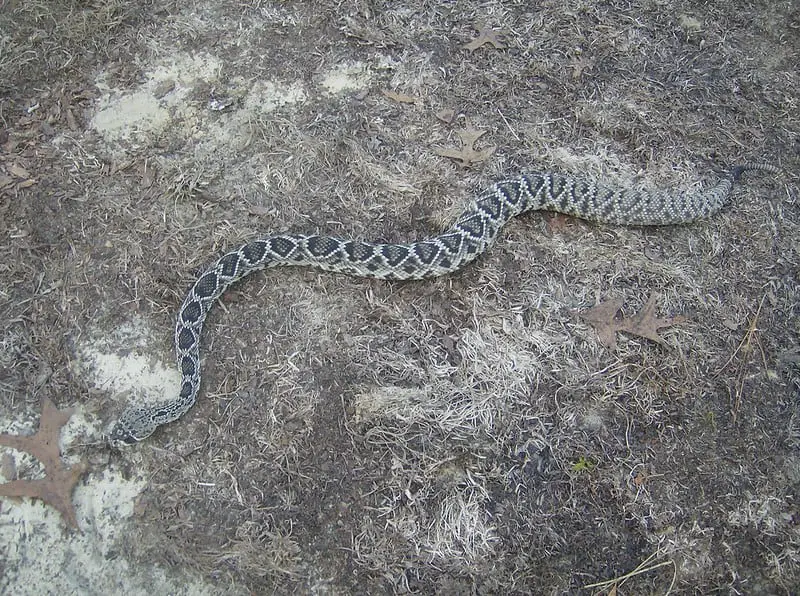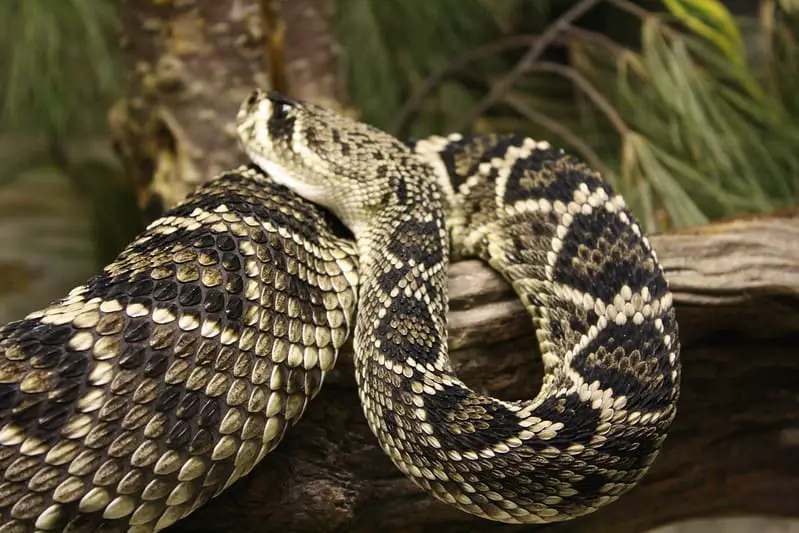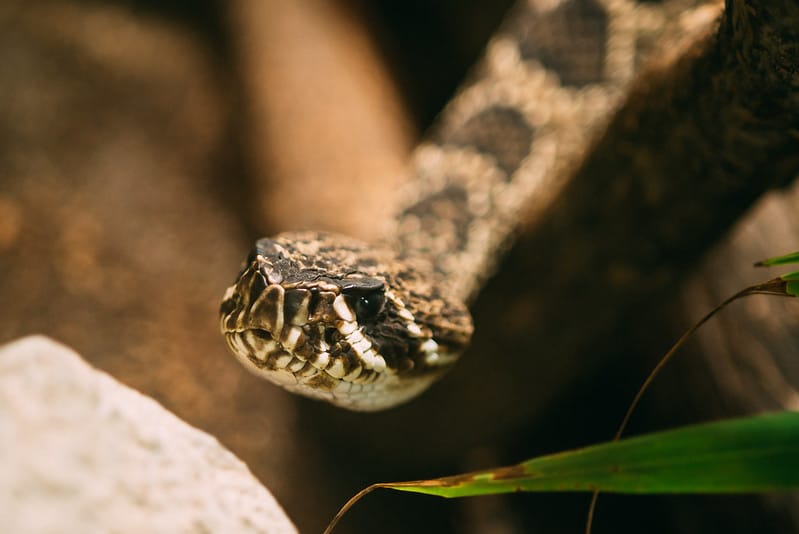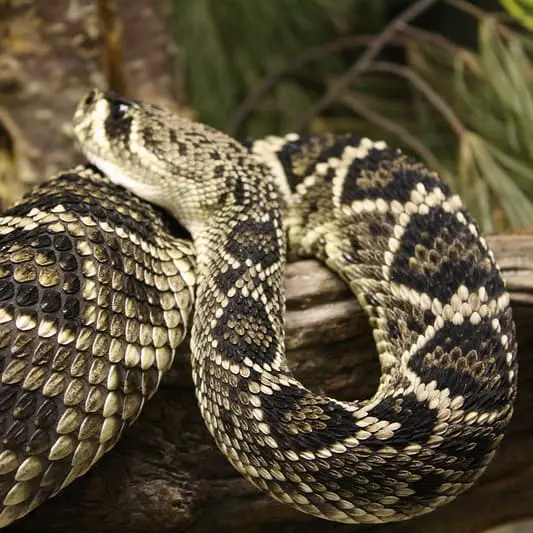Cortalus adamanteus, commonly called the eastern diamondback rattlesnake, is a highly venomous snake found in the Southeastern United States. It is the largest venomous snake in the United States and a bite can be fatal. Its common name is owed to characteristic diamond-shapes on its back.
Description
Size
The eastern diamondback rattlesnake is the largest venomous snake in the United States and arguably also in the world. The average body length is 5.6 feet (170 cm). Male specimen sometimes grow up to 7 feet (210 cm). The largest ever recorded eastern diamondback rattlesnake was 7.8 feet (240 cm) in length.
The average weight of an eastern diamondback rattlesnake is 3 to 10 lb (1.5 to 5 kg). The average body weight is 5.5 lb (2.5 kg) while some specimen can reach a weight of up to 15 lb or more (6.5 kg).

Pattern
The base coloration of the body of an eastern diamondback rattlesnake are beige with patches of darker brown shades. The snake can be identified by the 24-35 hexagonal patterns on its back. The diamond-shaped patterns are dark brown with a lighter center and a frame of light brown, almost whitish scutes. There are 5-10 darker bands around the tail, making this area appear overall darker. This is also a great indicator to distinguish the eastern diamondback rattlesnake from the western diamondback rattlesnake. The latter has black and white stripes on its tail.

Hunting Behavior
Eastern diamondback rattlesnakes either actively hunt for prey or lie in ambush waiting for prey to get close enough to them to strike a deadly bite. Their main prey are mammals such as rabbits, rats and mice. Occasionally, they are also seen eating birds or large insects and lizards.
In the early months of spring, they often hunt during daytime while they become mostly nocturnal during the hot summer months. After sunrise and in the evening, they are often found basking in the sunlight.
Bite and Venom
The eastern diamondback rattlesnake has the largest fangs for a venomous snake in the United States. For large specimen, they can be up to one inch long (25 mm). Therefore, a bite of this generally non-aggressive spider is painful in any case. Furthermore, the venom contains several potent toxins and enzymes that can lead to severe reactions including internal bleeding and organ damage. Untreated bites have a reported mortality rate of 10-20%.
If you are bitten by a rattlesnake, try to remain calm. Do not tie off the affected area and do not stop the bleeding if you are bleeding. Try to keep your heart rate as low as possible and get medical attention as soon as possible. The person who got bitten should move as little as possible. Either take a car to the nearest hospital, or if you are on foot, call an ambulance.

Habitat
The eastern diamondback rattlesnake has adapted to living in various ecosystems in the Southeast of the United States. These can include dry pine forests, as well as other vegetations zones, swamps and salt marshes. They are often found in coastal areas and are excellent swimmers. There are recordings of some specimen swimming for miles in the Florida Keys as well as in Southern Texas.
Eastern diamondback rattlesnake range in the USA
The eastern diamondback rattlesnake is found in the Southeastern part of the United States. It ranges from Eastern Louisiana through Southern Mississippi, Southern Alabama and Georgia, South Carolina as well as South-Eastern North Carolina and throughout Florida (including the Floriday Keys). However, specimen have also been found outside of this range. In 2020, a man has been bitten by an eastern diamondback rattlesnake in Southern New Jersey – much further north than their normal range. Over the last years, the population of eastern diamondback rattlesnakes has decreased greatly and it is unclear if there are still populations in Louisiana as well as in North Carolina.
Scientific classification of Crotalus adamanteus
- Kingdom: Animalia
- Phylum: Chordata
- Class: Reptilia
- Order: Squamata
- Suborder: Serpentes
- Clade: Caenophidia
- Clade: Colubroides
- Family: Viperidae
- Subfamily: Crotalinae
- Genus: Crotalus
- Species: Crotalus adamanteus
Other common names
Next to its most common name eastern diamondback rattlesnake, the snake is also known under these common names: eastern diamondback, diamond rattlesnake, lozenge-spotted rattlesnake, southern woodland rattler, diamond(-patch) rattler, Florida diamond-back (rattlesnake), water rattlesnake, Florida rattlesnake, southeastern diamond-backed rattlesnake, southeastern diamond-backed rattler, water rattle. In the range of the snake, it is often also only called rattler, rattlesnake or common rattlesnake.
